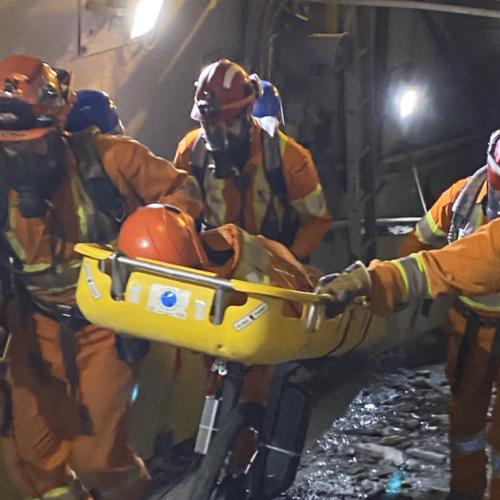Description
Rescue operations and emergency services are the backbone of community safety, especially during times of crisis. Whether responding to natural disasters like earthquakes, floods, wildfires, or man-made incidents such as industrial accidents, terrorist attacks, or car crashes, these services are designed to deliver immediate relief and assistance, minimizing loss of life, injury, and damage. At the heart of these efforts are highly trained personnel, including firefighters, paramedics, search and rescue (SAR) teams, disaster response teams, and law enforcement officers, each equipped with specialized tools, technology, and knowledge to navigate complex and hazardous environments. The immediate response to a crisis is the most visible and urgent part of rescue operations. Rescue teams must act swiftly and decisively to locate and assist victims, provide medical care, and prevent further harm. In some cases, this involves conducting search and rescue missions in hazardous locations, performing life-saving medical interventions, or establishing temporary shelters for those displaced by disasters. Specialized equipment, such as drones, thermal imaging, rescue dogs, and medical kits, plays a vital role in enhancing the effectiveness of these teams in providing accurate, timely, and effective interventions. However, the role of emergency services goes beyond mere reaction. A significant part of their mission is to focus on preparedness and prevention, working proactively to reduce the risk and impact of emergencies before they happen. This includes: Training and Drills: Regularly conducting exercises that simulate different emergency scenarios helps rescue teams improve their response times, refine their skills, and enhance coordination. These drills are also extended to communities, where public awareness programs teach individuals how to act in the event of various disasters (such as knowing evacuation routes, first-aid procedures, or fire safety tips). Community Outreach: Emergency services engage with local populations through outreach programs that teach preparedness, raise awareness about risks, and foster resilience. Community education efforts often include home safety assessments, disaster preparedness workshops, and local emergency response teams that can act when larger-scale help is delayed. Building Resilience: Effective emergency services not only respond to incidents but also build resilience in communities by promoting safer building practices, environmental safeguards, and early warning systems. For example, flood-prone areas may be equipped with better drainage systems, while at-risk populations can be provided with evacuation plans and shelters well before an emergency arises. Technological Integration: Leveraging modern technology, emergency services can anticipate and respond more effectively. Geographic Information Systems (GIS), predictive modeling, and real-time communication tools help monitor risks (like wildfires or hurricanes) and enhance the coordination of rescue operations. Digital platforms and mobile apps have also become invaluable for providing real-time updates, facilitating rapid communication between emergency responders and citizens, and improving the delivery of services during an emergency. Post-Emergency Support and Recovery: After an emergency, rescue operations shift to recovery and long-term support. This phase involves restoring infrastructure, providing mental health support, rebuilding homes and businesses, and assisting individuals in recovering from trauma. Emergency services often work alongside other governmental, non-governmental, and community organizations to provide continuous care, ensuring the process of rebuilding lives and livelihoods is as smooth as possible. The Value of Investment in Rescue and Emergency Services: The effectiveness of these services depends on adequate investment, not only in personnel and equipment but also in research, technology, and community education. Governments, businesses, and individuals must recognize that funding rescue services is an investment in the overall health and safety of society. Well-funded and well-coordinated emergency services save lives, prevent greater economic loss, and allow communities to bounce back faster from disasters, ensuring long-term societal well-being. Building a Safer Future: By prioritizing the development of robust rescue operations and emergency response services, societies are not only prepared to respond to emergencies but also empowered to prevent and mitigate the risks that come with them. The ongoing development of emergency response systems is integral to building resilient communities that can face future challenges with greater confidence.


